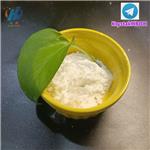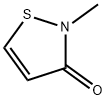Preparation method and application of methylisothiazolinone
Apr 22,2022
Background and overview
Methylisothiazolinone (MIT) is a white to yellow powder with a certain odor, which can inhibit the growth and reproduction of various microorganisms (such as bacteria, fungi, yeast, etc.) agent. Compared with other types of fungicides, isothiazolinone fungicides have the advantages of obvious effect and quick effect in controlling the growth and metabolism of microorganisms and preventing the formation of biofilms. It is also an excellent water treatment agent. Good miscibility, it can be miscible with various corrosion inhibitors such as chlorine, scale inhibitor and dispersant, and most anionic, cationic and nonionic surfactants, and the effective dosage is small. Non-toxic and non-polluting, easy to mix and use in various formulations, wide range of PH, easy to biodegrade into non-toxic and non-polluting substances after dilution. Low toxicity and no residue in emissions. The active agent has good compatibility with the protein ingredients. Its mechanism of action is to kill bacteria by breaking the bonds between bacteria and algal proteins. After contact with microorganisms, it can rapidly and irreversibly inhibit their growth, resulting in the death of microbial cells, harmful to common bacteria (sulfate-reducing bacteria, sludge). Mold), fungi (iron-oxidizing bacteria, mold, yeast), algae, etc. have strong inhibitory and killing effects. It has the characteristics of high killing efficiency, good degradability, no residue, safe operation, good compatibility, strong stability and low cost of use. In large doses, it has a significant effect on the peeling of biological mucus. It has been widely used in iron and steel smelting, oilfield water injection, thermal power generation, papermaking, oil refining, chemical industry, textile, industrial cleaning, pesticides, cutting oil, water-based coatings, daily chemicals, inks, dyes, leather and other fields.
Preparation

The experimental equipment for the preparation of this experiment is a tubular reactor. First, N,N'-dimethyl-3,3'-dithiodipropionamide, ethyl acetate and potassium iodide are continuously mixed in the ratio of 100:500:0.2 Put into the preheating system, and the mixture is preheated to 35-40°C. The solid-liquid mixture is uniformly mixed into a slurry by a static mixer, and then the raw materials are slowly fed into a pipeline reactor for reaction. The pipeline reactor is fed with chlorine gas at multiple points, and the ventilation speed is controlled by the temperature control system. The reaction temperature is 45°C-50°C, and the reaction time of the material staying in the pipeline is 5 minutes. The reaction liquid from the pipeline reactor is collected and separated into the post-processing system after gas-liquid separation. After the post-treatment process, an aqueous solution of MIT with a content of 50% was obtained with a yield of 90%, in which the content of CMIT was <50 ppm. In this process, all the hydrogen chloride gas enters the hydrogen chloride absorption system to produce the product hydrochloric acid.
Use
Can be used to prepare 4,5-dichloro-2-methyl-4-isothiazolin-3-one
Under nitrogen protection, add 5.2 g (0.045 mol) of 2-methyl-3-isothiazolone and 100 ml of ethyl acetate into a 250 ml three-necked flask, stir and mix well, cool down to below -70°C, and add it within 45 minutes. 6.08 g (0.045 mol) of sulfuryl chloride, the reaction solution was stirred and reacted at this temperature for 4 hours, and then the temperature was raised to room temperature. The reaction solution was evaporated under reduced pressure to remove ethyl acetate, and the obtained solid was extracted with benzene. Filtration and distillation of benzene under reduced pressure gave 4 g of 4,5-dichloro-2-methyl-3-isothiazolone (96% based on sulfuryl chloride), which was obtained after recrystallization from petroleum ether (90℃-120℃). Pure material, m.p. 114°C-117°C.
Can be used as preparation of bactericide or water treatment agent
References
【1】CN110483438,2019,A
【2】US4105431,1978, A
- Related articles
- Related Qustion
- What is MIT? Jun 16, 2022
Methylisothiazolinone(MIT), along with other isothiazolinones, is a biocide widely used as a preservative in personal care products.
As a secondary amine, indole has a hydrogen atom which can be substituted by alkali metals. High-temperature coal tar contains on average just under 0.2 % indole.....
Apr 22,2022Organic Raw MaterialThis article describes a background overview and preparation and use of Phthalimide....
Apr 22,2022API2-Methyl-4-isothiazolin-3-one
2682-20-4You may like
2-Methyl-4-isothiazolin-3-one manufacturers
- Methylisothiazolinone
-

- $0.00 / 1kg
- 2024-05-22
- CAS:2682-20-4
- Min. Order: 1kg
- Purity: 0.99
- Supply Ability: 500000kg
- Methylisothiazolinone
-

- $10.00 / 1kg
- 2024-05-22
- CAS:2682-20-4
- Min. Order: 1kg
- Purity: 98%
- Supply Ability: 20tons
- 2-Methyl-4-Isothiazolin-3-one
-

- $1.00 / 1KG
- 2024-04-28
- CAS:2682-20-4
- Min. Order: 1KG
- Purity: 99.91%
- Supply Ability: 200000




